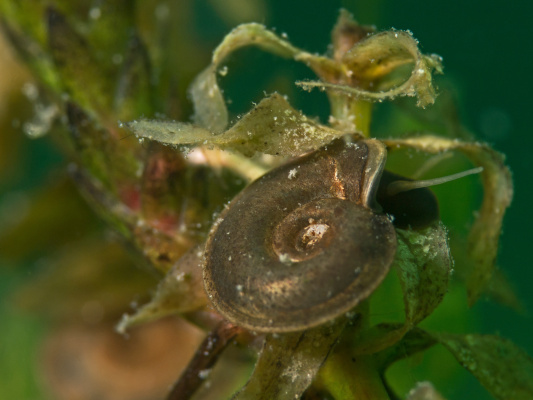Great Ramshorn
Planorbarius corneus
<
>


 Type
Type Invertebrate: Other
Invertebrate: OtherMisc
 Status
Status Common
Common Widespread
Widespread Season
Season Spring
Spring Summer
Summer Autumn
Autumn Winter
Winter Keep an eye out for these spectacular large water snails in the canal itself.
The Great Ramshorn is an amphibious freshwater snail that inhabits small ponds; still, weedy pools; or slow-moving waterways such as The Monty.
By far the commonest and largest of the freshwater gastropods, its shell can grow to 35mm. This impressive shell coils in a flat spiral and while it looks as if it coils to the right (dextral), it actually coils to the left (sistral).
They like to graze on algae by scraping rocks with a special tongue with their embedded teeth which are called radula. These scavengers feed on algae, plant debris and other detritus in ponds, pools and canals, and are part of a healthy ecosystem.
The Great Ramshorn are hermaphrodite and lay their disk-shape eggs in a protective mass of jelly on plants or any other underwater structure. Ramshorn snails use lungs to breathe air, but they also have a clever may of trapping and storing a supply of air inside their shells, which means they can tolerate water with low dissolved oxygen.
Distinctive because of their size, their shells are various shades of brown and many have a red hue caused by haemoglobin.


